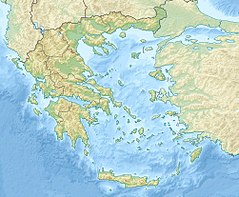
A space telescope is a telescope in outer space used to observe astronomical objects. Suggested by Lyman Spitzer in 1946, the first operational telescopes were the American Orbiting Astronomical Observatory, OAO-2 launched in 1968, and the Soviet Orion 1 ultraviolet telescope aboard space station Salyut 1 in 1971. Space telescopes avoid several problems caused by the atmosphere, including the absorption or scattering of certain wavelengths of light, obstruction by clouds, and distortions due to atmospheric refraction such as twinkling. Space telescopes can also observe dim objects during the daytime, and they avoid light pollution which ground-based observatories encounter. They are divided into two types: Satellites which map the entire sky, and satellites which focus on selected astronomical objects or parts of the sky and beyond. Space telescopes are distinct from Earth imaging satellites, which point toward Earth for satellite imaging, applied for weather analysis, espionage, and other types of information gathering.

The Spitzer Space Telescope, formerly the Space Infrared Telescope Facility (SIRTF), was an infrared space telescope launched in 2003, that was deactivated when operations ended on 30 January 2020. Spitzer was the third space telescope dedicated to infrared astronomy, following IRAS (1983) and ISO (1995–1998). It was the first spacecraft to use an Earth-trailing orbit, later used by the Kepler planet-finder.
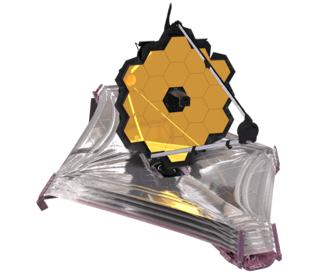
The James Webb Space Telescope (JWST) is a space telescope designed to conduct infrared astronomy. As the largest telescope in space, it is equipped with high-resolution and high-sensitivity instruments, allowing it to view objects too old, distant, or faint for the Hubble Space Telescope. This enables investigations across many fields of astronomy and cosmology, such as observation of the first stars and the formation of the first galaxies, and detailed atmospheric characterization of potentially habitable exoplanets.
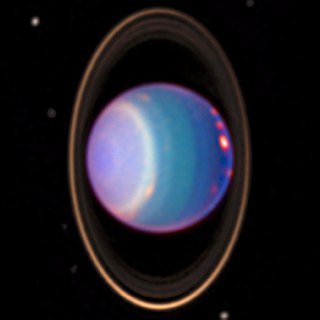
The Near Infrared Camera and Multi-Object Spectrometer (NICMOS) is a scientific instrument for infrared astronomy, installed on the Hubble Space Telescope (HST), operating from 1997 to 1999, and from 2002 to 2008. Images produced by NICMOS contain data from the near-infrared part of the light spectrum.
Darwin was a suggested ESA Cornerstone mission which would have involved a constellation of four to nine spacecraft designed to directly detect Earth-like planets orbiting nearby stars and search for evidence of life on these planets. The most recent design envisaged three free-flying space telescopes, each three to four metres in diameter, flying in formation as an astronomical interferometer. These telescopes were to redirect light from distant stars and planets to a fourth spacecraft, which would have contained the beam combiner, spectrometers, and cameras for the interferometer array, and which would have also acted as a communications hub. There was also an earlier design, called the "Robin Laurance configuration," which included six 1.5 metre telescopes, a beam combiner spacecraft, and a separate power and communications spacecraft.

The Herschel Space Observatory was a space observatory built and operated by the European Space Agency (ESA). It was active from 2009 to 2013, and was the largest infrared telescope ever launched until the launch of the James Webb Space Telescope in 2021. Herschel carries a 3.5-metre (11.5 ft) mirror and instruments sensitive to the far infrared and submillimetre wavebands (55–672 μm). Herschel was the fourth and final cornerstone mission in the Horizon 2000 programme, following SOHO/Cluster II, XMM-Newton and Rosetta.

WASP or Wide Angle Search for Planets is an international consortium of several academic organisations performing an ultra-wide angle search for exoplanets using transit photometry. The array of robotic telescopes aims to survey the entire sky, simultaneously monitoring many thousands of stars at an apparent visual magnitude from about 7 to 13.

Konkoly Observatory is an astronomical observatory located in Budapest, Hungary is part of the Research Centre for Astronomy and Earth Sciences and belongs to the HUN-REN Magyar Kutatási Hálózat. Konkoly Observatory was founded in 1871 by Hungarian astronomer Miklós Konkoly-Thege (1842–1916) as a private observatory, and was donated to the state in 1899. Konkoly Observatory, officially known as HUN-REN CSFK Konkoly Thege Miklós Csillagászati Intézet in Hungarian, is the largest astronomical research institute in Hungary, and hosts the largest telescopes in the country. The Observatory has more than 60 researchers, a quarter of them are non-Hungarian.

The Helmos or Chelmos Observatory is an observatory located at the top of mount Chelmos, near Kalavryta, southern Greece. It is the largest research infrastructure of the National Observatory of Athens and IAASARS. The observatory was completed and first opened in 2001. Its main equipment is the Aristarchos 2.3 m Telescope, manufactured by German company Carl Zeiss AG. With the finance from the universities of Patras and Manchester.

PLAnetary Transits and Oscillations of stars (PLATO) is a space telescope under development by the European Space Agency for launch in 2026. The mission goals are to search for planetary transits across up to one million stars, and to discover and characterize rocky extrasolar planets around yellow dwarf stars, subgiant stars, and red dwarf stars. The emphasis of the mission is on Earth-like planets in the habitable zone around Sun-like stars where water can exist in a liquid state. It is the third medium-class mission in ESA's Cosmic Vision programme and is named after the influential Greek philosopher Plato. A secondary objective of the mission is to study stellar oscillations or seismic activity in stars to measure stellar masses and evolution and enable the precise characterization of the planet host star, including its age.
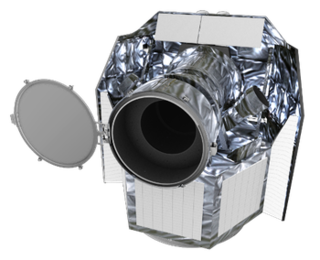
CHEOPS is a European space telescope. Its objective is to determine the size of known extrasolar planets, which will allow the estimation of their mass, density, composition and their formation. Launched on 18 December 2019, it is the first Small-class mission in ESA's Cosmic Vision science programme.

The Institute for Astronomy, Astrophysics, Space Applications, and Remote Sensing is a non-profit research institute in Greece with expertise in multidisciplinary astrophysical, space and environmental sciences. It is an independent research Institute of the National Observatory of Athens (NOA) established in 2012 from the merging of the Institute of Astronomy and Astrophysics and the Institute of Space Applications and Remote Sensing. The scientists of the Institute have broad knowledge in various areas of observational Astrophysics, Space Science and Earth observation techniques and their applications. They have established collaborations with research groups in Europe and United States, and their work is recognized through publications in refereed journals, invited talks at international conferences, and coordination of EU-funded and ESA-funded research projects. More details on the IAASARS and its activities can be found in its annual report.
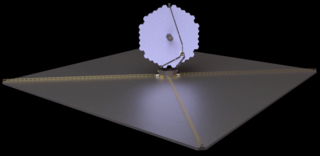
The Large Ultraviolet Optical Infrared Surveyor, commonly known as LUVOIR, is a multi-wavelength space telescope concept being developed by NASA under the leadership of a Science and Technology Definition Team. It is one of four large astrophysics space mission concepts studied in preparation for the National Academy of Sciences 2020 Astronomy and Astrophysics Decadal Survey.

The Atmospheric Remote-sensing Infrared Exoplanet Large-survey (ARIEL) is a space telescope and the fourth medium-class mission of the European Space Agency's Cosmic Vision programme. The mission is aimed at observing at least 1000 known exoplanets using the transit method, studying and characterising the planets' chemical composition and thermal structures. Compared to the James Webb Space Telescope, ARIEL will be a much smaller telescope and have more observing time available for planet characterisation. ARIEL is expected to be launched in 2029 aboard an Arianespace Ariane 6 together with the Comet Interceptor.
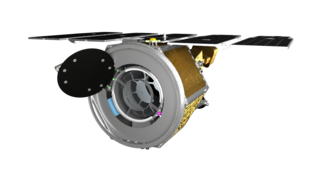
The Extreme-ultraviolet Stellar Characterization for Atmospheric Physics and Evolution (ESCAPE) mission aims to find environments beyond Earth's solar system that might host planets with thick atmospheres to support life.

The Kryoneri Observatory, also known as the Kryoneri Astronomical Station, is an astronomical obervatory in Greece operated by the IAASARS research institute of the National Observatory of Athens. It is home of the third largest telescope in Greece, a 1.23 metres (48 in) Cassegrain reflector, which was used for the NELIOTA project of ESA and NOA. The observatory is also housing smaller instruments that are conducting research for IAASARS and are participating in international programmes.

Near-Earth object Lunar Impacts and Optical TrAnsients (NELIOTA) was a research project of the European Space Agency in collaboration with the National Observatory of Athens that aimed to determine the distribution and frequency of small near-earth objects by monitoring lunar impact flashes using a 1.23 m telescope in the Kryoneri Observatory.

